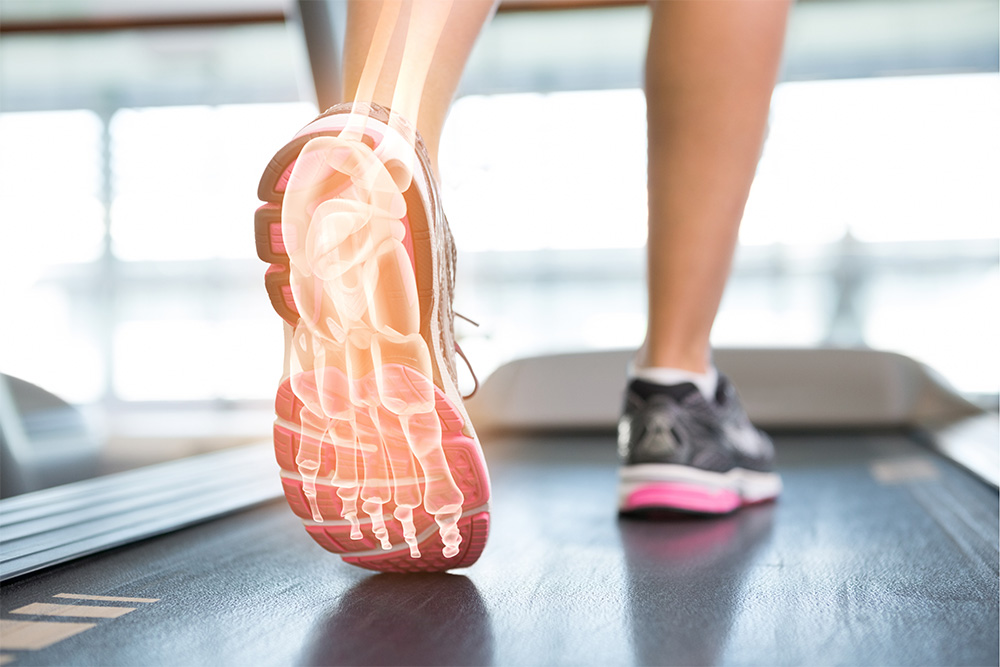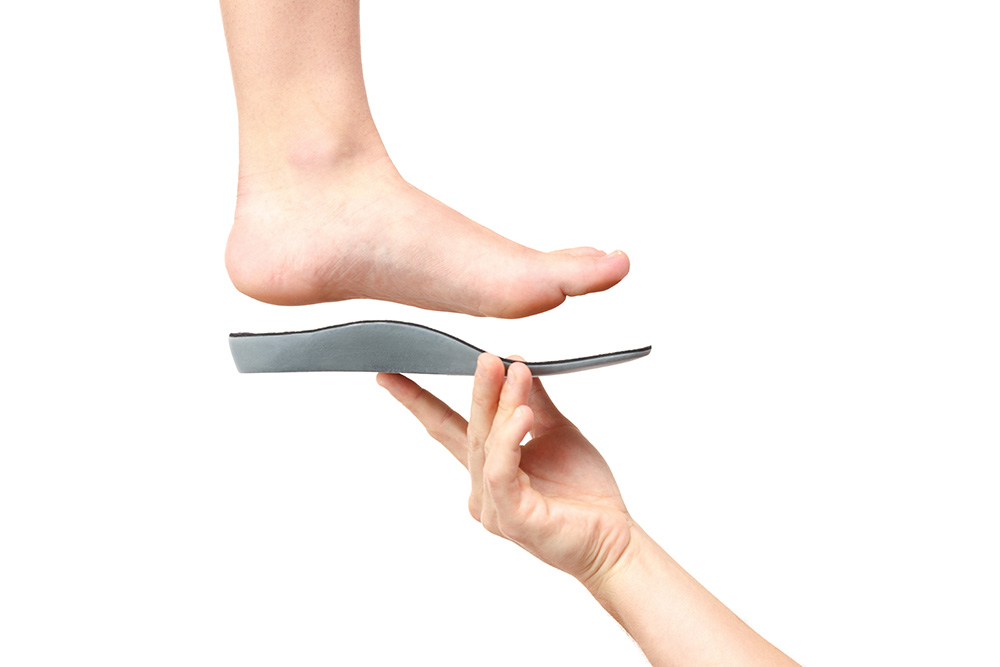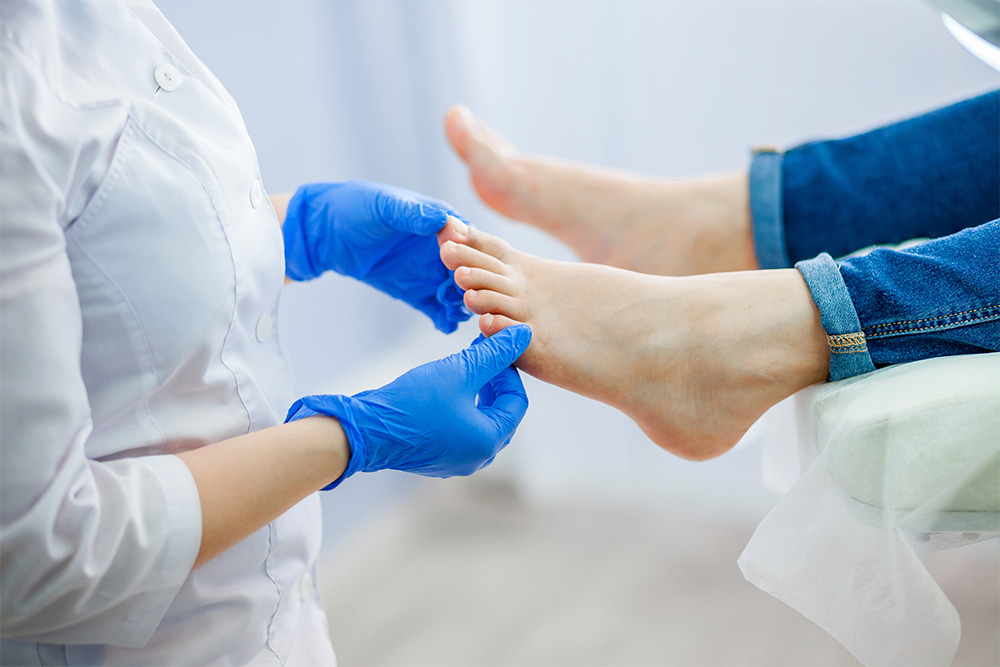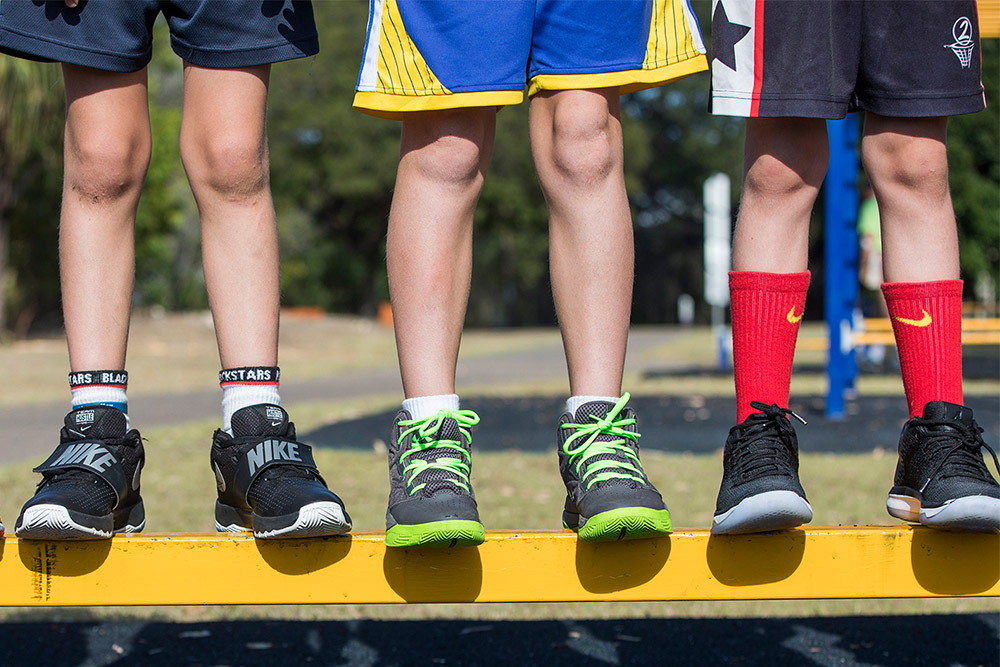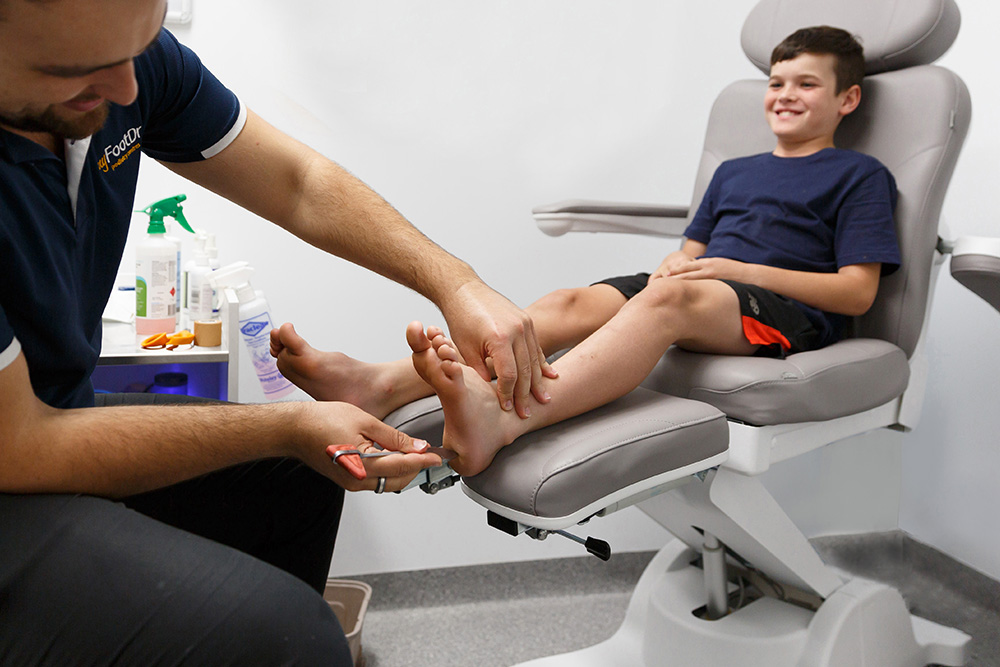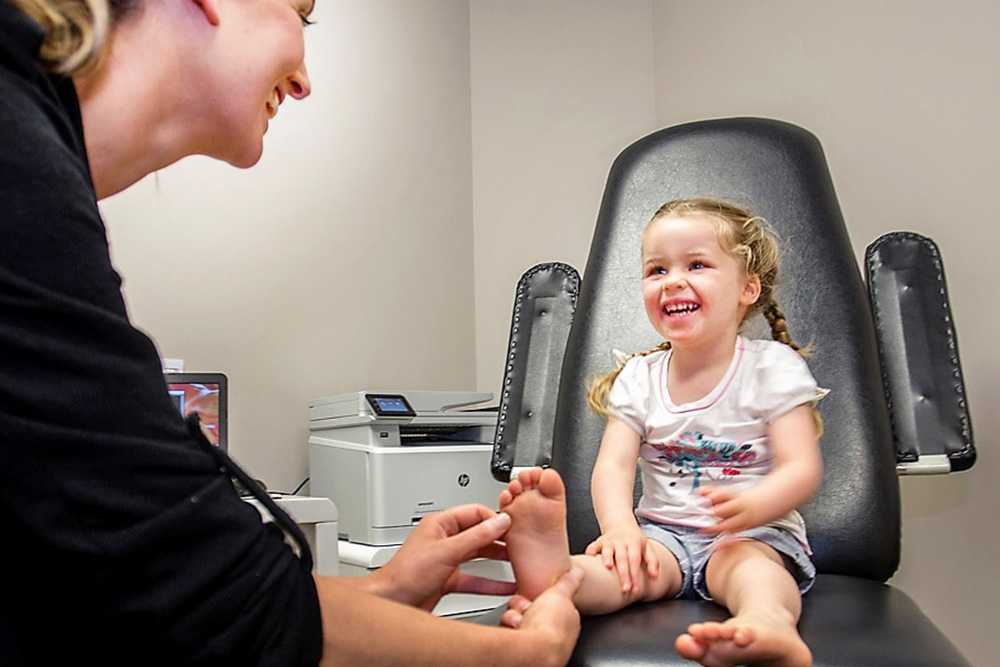
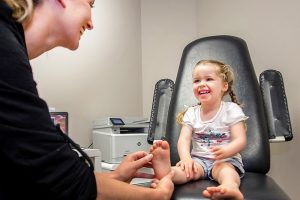
It goes without saying that children are always growing and changing! It’s exciting to watch them grow and become more confident on their feet. This often quite rapid growth, however, can result in children experiencing vague symptoms that can be difficult for parents to identify – or know what to do to help.
What Are The Most Common Children’s Feet Problems?
Children can experience everything from:
- Flat feet (rolled-in) feet
- In-toeing (pigeon toeing)
- Out-toeing
- Walking on tip-toes
- Slow to begin walking
- Knock-knees
- Bowlegs
- Leg length difference
- Clumsiness or poor balance
- Regular tripping or falling
- Growing pains
- Limping
- Low muscle tone
- Oddly shaped toes (curly/clawed)
- Ingrown toenails
- Bunions or other deformities
- Callus and corns
- Warts
We’ve detailed the top five problems in children aged 1-5 and 6-17 years here.
In most cases, these problems either pass or respond well to treatment. Podiatrists are highly skilled at assessing children’s feet and lower limb biomechanics and also work alongside other health professionals, such as physiotherapists, to ensure your child is getting the best possible care.
When Should I Be Concerned About My Child’s Foot Pain?
There is never a time where foot pain in children is ‘normal’. You may easily be able to distinguish the cause of some foot pain, like blisters on the toes from tight or narrow shoes. Other times, like when your child starts getting knee, shin or foot pain during sports, the cause may not be clear. You may also see something, like in-toeing, knock knees or an abnormal walking pattern, that may ring alarm bells or have you wondering if they’re normal or not. Our rule of thumb is that if you’re concerned, or you’re not sure what’s going on or why, to bring your kids in to be checked.
Here are three common questions we often get asked about children’s feet – click on the questions below to read the answers and learn more.
- My child hasn’t started walking yet, is something wrong?
- Which shoes are best for my child?
- My child has flat feet – is this normal?
Children’s Foot Pain Treatment Options
Children’s feet are constantly growing and changing – and so are their needs. At My FootDr, every treatment plan is created uniquely for that child, their age, symptoms, level of activity and considers their future growth and development. Every aspect of your child’s care is carefully explained and detailed so you can help your child get the most out of their treatment at home. Their care may include:
- Strengthening the feet and legs
- Stretching program
- Gait plate (for in-toeing)
- Custom foot orthotics
- Footwear changes
- Splinting or bracing
- Wart treatment
- Corn removal
- Ingrown toenail treatment or surgery
We Understand
We know that it can be daunting to bring kids in to see a health professional – especially if they’re in pain and not feeling their best. We always take time, care and patience with your little one, and have child-friendly clinics.
Children’s Foot Problems FAQs
Why do my toddler’s feet hurt at night?
Toddlers can experience muscle aches and spasms, which many practitioners often categorise as growing pains. Toddlers may also experience other pains in their muscles, joints and bones. It’s important to deduce the true cause of their pain and treat it appropriately, especially for their age. This is where your My FootDr podiatrist can help.
Why do my child’s ankles hurt?
Many kids have more mobility in their joints and ligaments than they will as adults. This may make them vulnerable to spraining their ankles. If ankle sprains are not well cared for and properly rehabilitated, ongoing ankle instability and pain may result. This may also cause problems and weakness in later years. Where pain is present at the back of the heels, they may have a growth-related condition called Sever’s disease. There are multiple other causes of pain at the ankles so we recommend an assessment with your My FootDr podiatrist to get an accurate diagnosis.
How do you treat a sprained foot in a child?
Depending on where at the foot or ankle the sprain has occurred, the first step is to avoid any movements that produce the painful symptoms. This is because these movements will be further straining the damaged and sprained ligaments, which may worsen the injury. Before seeing your podiatrist, you may use ice and elevate the foot to help reduce the swelling and pain.
Your podiatrist can then help your child limit the movement of the foot to allow the damaged ligaments to heal. This does not necessarily mean a boot – it may be through using a strategic combination of strapping, custom foot orthotics and/or footwear, allowing your child to stay mobile and active on their feet.
What causes a child to limp?
There is a wide variety of causes of limping in children and this may be very different between each child. Causes can range from differences in leg lengths to hip or knee pain, foot and ankle pain, fractures, inflammation, infection, joint or bone problems, muscle tightness, weakness or injury, and many more. As there are so many variations, it is crucial to get an accurate diagnosis after a comprehensive assessment from your podiatrist. This may help prevent complications and other problems in later life.
What would cause a child’s feet to swell?
Swelling is a common side effect of injury and damage to bones, joints, muscles, ligaments or tissues. Swelling can also occur as a result of infection, and much less commonly, arthritis in kids. When swelling is localised to a specific area, this indicates that the injury has occurred in this area. If the entire feet are swollen, this may indicate something systemic is happening and may be serious. We recommend having any swelling in the feet or legs checked, diagnosed and treated appropriately.


